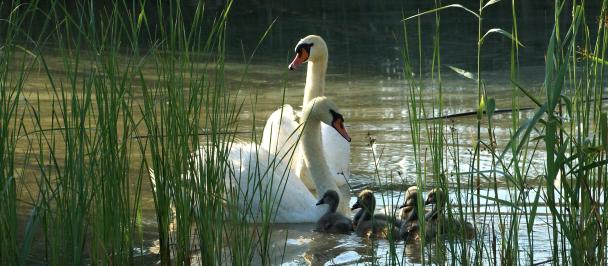UNDP hands over equipment to the Semey Ormany State Forest Natural Reserve
July 19, 2023

The United Nations Development Programme (UNDP) has officially handed over radio equipment to the Semey Ormany State Forest Nature Reserve.
In cooperation with the Committee on Forestry and Wildlife of the Ministry of Ecology and Natural Resources of the Republic of Kazakhstan and with financial support from the Global Environment Facility (GEF), 220 analog portable radio stations, 110 car radio stations and 150 car antennas were delivered at the request of the Semey Ormany State Forest Nature Reserve.
According to the Forestry and Wildlife Committee, as of 1 January 2023 forests cover 5 percent of the state's land area with a total area of 13.6 million hectares. The total area of the Semey Ormany State Forest Nature Reserve is 654,179.8 hectares.
One of the current challenges faced by personnel in Protected Areas (PAs) is the poor quality and lack of communication due to the geography and difficult terrain, size, and remoteness of protected areas. In this context, radio stations play a crucial role as they are sometimes the only means of communication between staff and the central office, especially when patrolling the vast and inaccessible areas of national parks and responding quickly to emergencies. UNDP is actively working with environmental organizations to address important issues such as improving the quality of monitoring and conserving of forest ecosystems and biodiversity.

"UNDP systemically supports the Government of Kazakhstan in developing sustainable agriculture and forestry, establishing a network of protected areas, strengthening the material and technical base, and training staff in modern technologies that increase management effectiveness and monitoring of natural areas and planning of environmental activities,"said Sukhrob Khojimatov, UNDP Deputy Resident Representative in Kazakhstan.
Material and technical support to environmental institutions plays a crucial role in ensuring effective coordination and security that contributes to sustainable management and conservation of natural resources. Since 2018, as part of its work UNDP has provided 14 PAs and eight forestries in Almaty, Zhetysu, East Kazakhstan, and Turkistan regions with small forest firefighting complexes, patrol vehicles, backpack fire extinguishers, specialized firefighting equipment, high-pressure fire extinguishers, fixed and portable radios, all-terrain vehicles, drones with additional accessories, and other equipment.
“We are striving to increase the forest area of our country to 5.3 percent of the total area of the country. Together with UNDP, many projects have been implemented to preserve the country's biodiversity. Over an area of more than 5 million hectares, 14 specially protected natural areas have been created and extended - areas where valuable biodiversity is concentrated. Now we are working on the improvement of normative legal acts regulating the issues of protection of forests from fires. In particular, it is a revision of the current norms on the availability of equipment and machinery for the implementation of measures for the protection and defense of forests in the areas of the State Forest Fund. This is now a priority task for us,”noted Daniyar Turgambaev, Deputy Chairman of the Forestry and Wildlife Committee, Ministry of Ecology and Natural Resources of the Republic of Kazakhstan.
In addition, a methodology for satellite monitoring of wildfires based on remote sensing data has been developed. This methodology includes techniques for determining coordinates of fire locations and obtaining up-to-date information for decision making on fire suppression methods. It also facilitates the assessment of access to transportation infrastructure and enables the detection and monitoring of wildfires using satellite imagery.
It is worth noting that UNDP's work in Kazakhstan also includes capacity building activities for staff of environmental institutions. These include training seminars for forestry workers to upgrade their skills to detect and monitor forest fires using remote sensing data, to learn how to use drones to identify fire-prone situations and assess damage in the event of a fire.

 Locations
Locations





